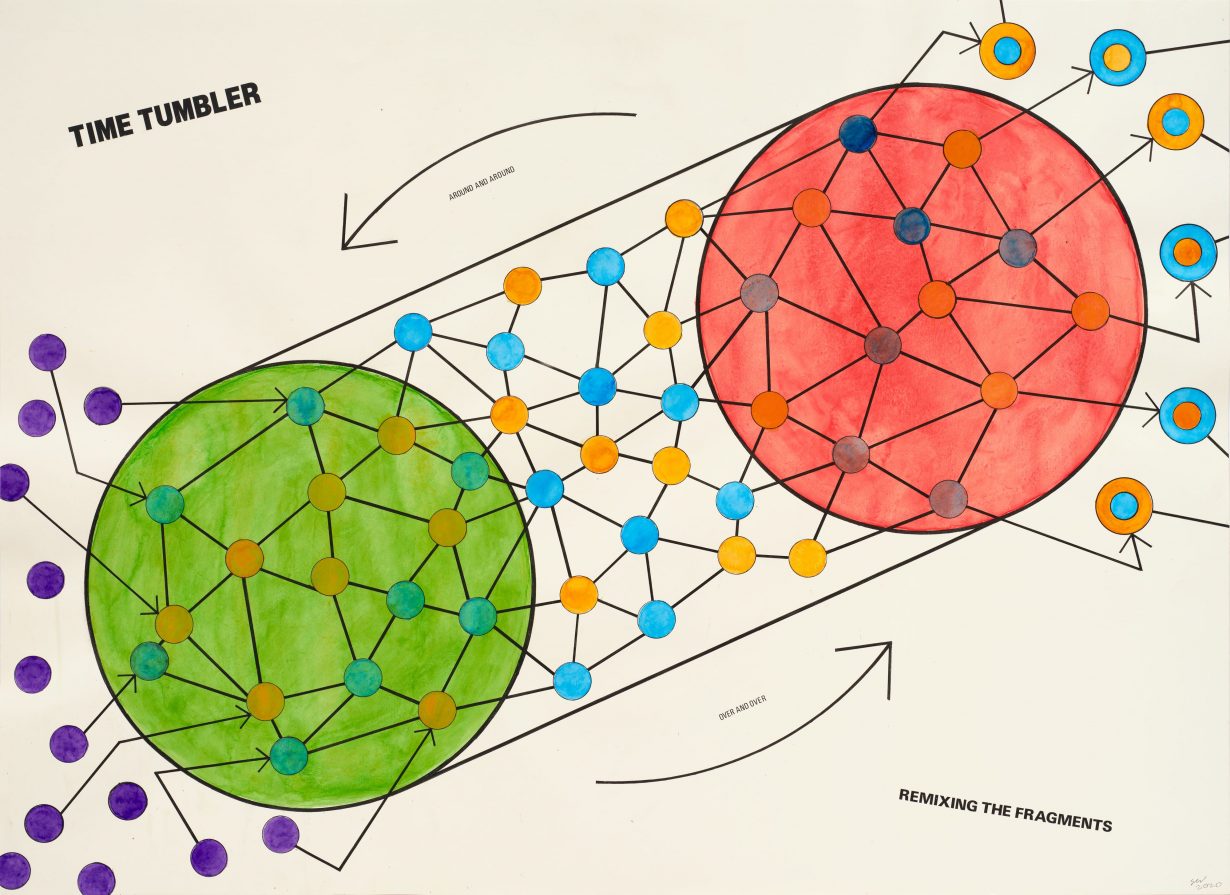The British conceptual artist reaches out to the community to find a new visual language
At the heart of British conceptual artist Stephen Willats’s work is a preoccupation with the networks emerging as part of the integrated global economy of the late twentieth century. There is also a question of how far that term – network – can be reconciled with the other precursory term and alternative way of conceiving of social relations: community.
Visitors to this exhibition learn about a particular socially integrated approach that the artist developed and termed ‘Artwork as Social Model’. It involved gathering testimonies from local communities and presenting findings in a new visual language that combined photography, diagrammatic drawings and text. One example is The Compartmentalised Cliff (1977), in which Willats spoke directly to residents of a new tower block in the banlieues of Paris. Testimonies containing hopes, dreams and concerns are used to form an alternative cartography of experience that is superimposed onto photographs of the built environment, with an insistence on the equal significance of both. Mapping these feelings also allowed participants to arrive at possible solutions, which are recorded in the work.
Willats’s belief is that art can serve as a sort of node in the wider system, or network, of behaviour. That reflecting the community’s thoughts might precipitate a change of behaviour and an alteration to the course of history. Could people, who were being treated as economic subjects and consumers by outside forces, circumnavigate them, or at least quietly resist, to forge meaningful relationships and achieve fulfilling lives, as a result of art?

The idea might seem fanciful, and the effect of time has also transformed these earlier works and meaningful enquiries into objects of nostalgic charm. This is half of the show’s appeal of course: the sentimentality with which we tend to view the utilitarian aesthetics of a bygone modernity. But observing the evolution of Willats’s career at close range also makes a strong case for a return to systems-based thinking at a smaller, more localised level. In his applied practice, there is an instructive humility and dedication to understanding people that seems to be lacking in so much contemporary art. The second part of the show might explain why.
Here we see how the tendency to map behaviour and feeling has become that much more fraught in an age of information technology. In a series of mysterious works titled Omni Directional Search Engine Drawings (2018–22), Willats presents us with possible schemas of interrelationship. The small diagrammatic works of the past have evolved into complex sagas – large and kaleidoscopic, composed of lines, squares, circles, stars, crosses and arrows. These images borrow the motifs of the office flipchart, rendered to similar effect in ink, pencil and watercolour (hand drawn and using similar materials to those of the office spaces that had also once been the focus of Willats’s work). Loosely based on the mechanisms of the search engine, and some insights into the ways in which AI algorithms function, these images are not replications however, but more like atavistic and ritualistic mandalas. If there is a better, more accurate way of portraying the digitised web in which we live – one that was just starting to be spun during the 1970s and 80s, but whose complexity has by this point far exceeded the comprehension of normal people – then I don’t know it.
In these images is a hopeful attempt to conceptualise a society in which people have become increasingly alienated from the fruits of their labour, whose economic contribution has become abstracted and whose relationships are becoming ever more dependent on communications technology. From one phase to the next, we see various attempts and failures at comprehension – an innocent curiosity in the first instance, that has defaulted to a sense of awe and confusion in the present. Amidst so much incomprehensible exploitation, the will to describe and explain, if only to reveal the irrationality of everything that surrounds us, is profound and vital.
Time Tumbler at Victoria Miro, London, 22 November–13 January
